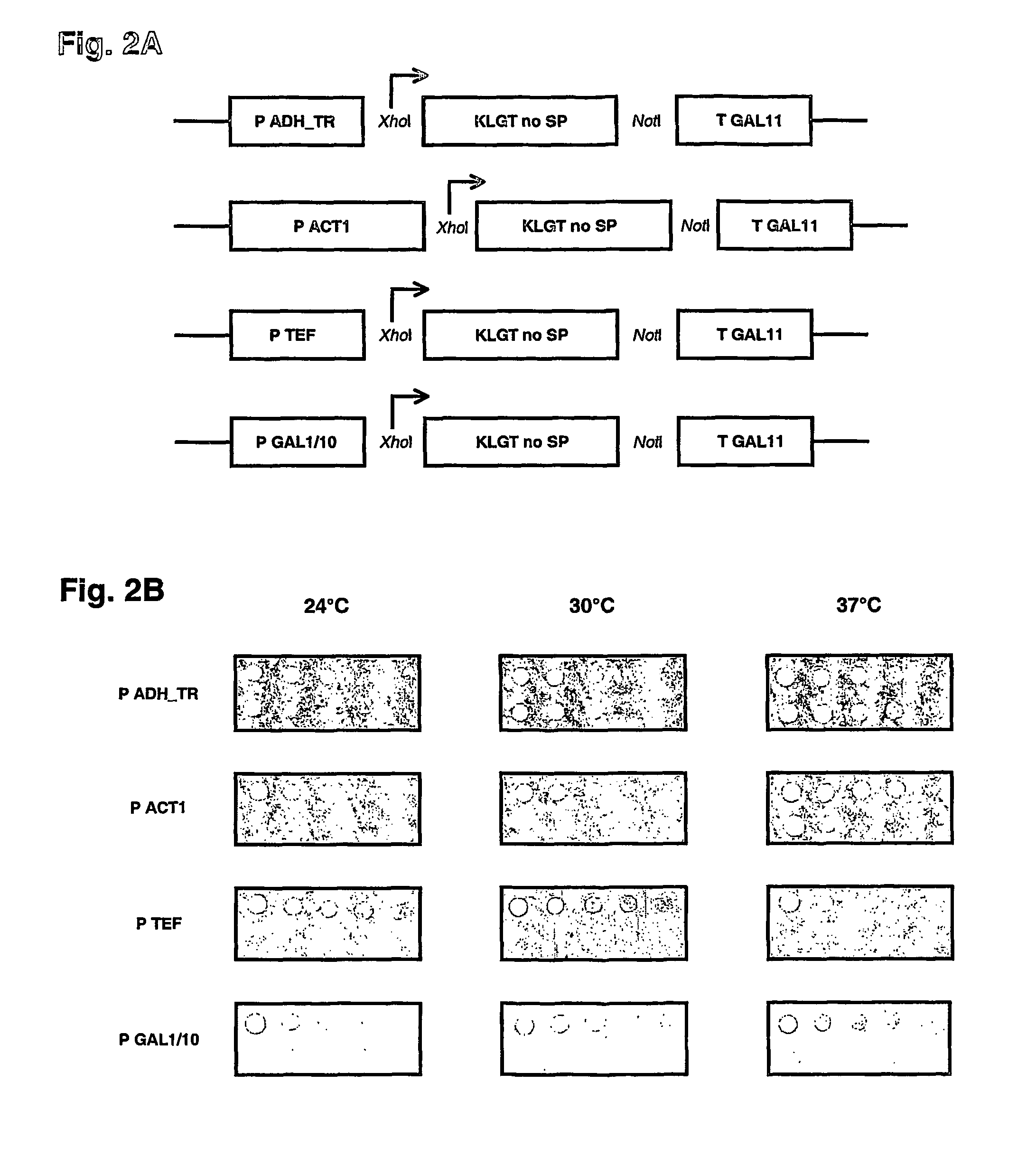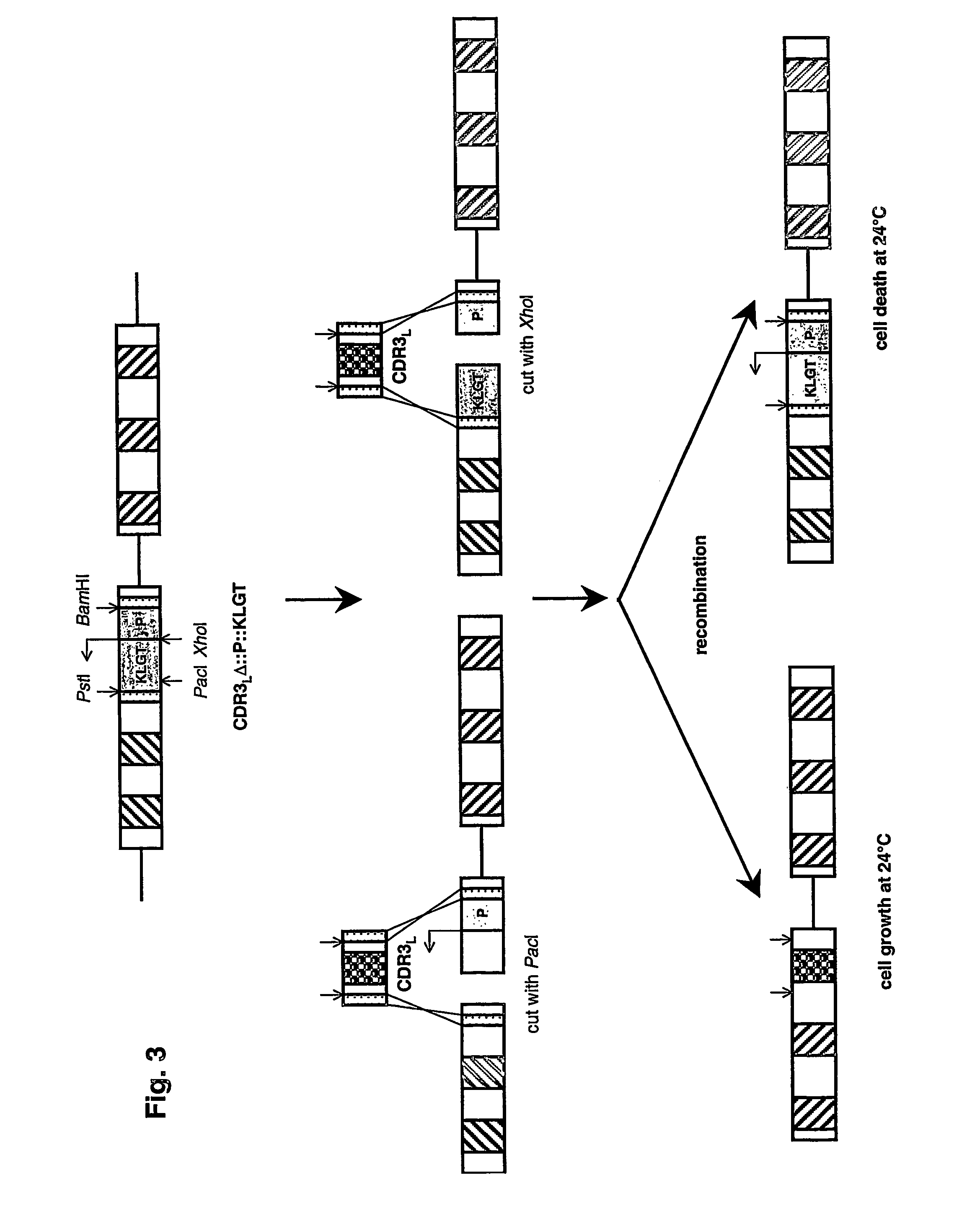Method for the construction of randomized gene sequence libraries in cells
a gene sequence and cell technology, applied in the field of in vivo method for the generation of randomized gene libraries, can solve the problems of catalytic inactivity and efficiency reduction
- Summary
- Abstract
- Description
- Claims
- Application Information
AI Technical Summary
Benefits of technology
Problems solved by technology
Method used
Image
Examples
Embodiment Construction
[0035]The method of the present invention for protein region replacement and / or randomization using homologous recombination in cells, preferably yeast cells, coupled to a counterselection for non-recombining clones offers important advantages over existing systems designed for the same purpose. First, in contrast to library production using cloning or straight homologous recombination, the negative selection protocol keeps the background of non-randomized clones below 0.5%, which may be essential in certain applications. In contrast to library production with cloning, the library can be produced and screened in one single step in yeast. The loss of poorly growing clones encountered during bacterial library production is therefore eliminated. In addition, the libraries produced with homologous recombination can be stored infinitely as a yeast glycerol stock, which allows direct use in a next screening experiment. And, as, for libraries produced in bacteria, the libraries produced in...
PUM
| Property | Measurement | Unit |
|---|---|---|
| temperature | aaaaa | aaaaa |
| temperatures | aaaaa | aaaaa |
| temperatures | aaaaa | aaaaa |
Abstract
Description
Claims
Application Information
 Login to View More
Login to View More - R&D
- Intellectual Property
- Life Sciences
- Materials
- Tech Scout
- Unparalleled Data Quality
- Higher Quality Content
- 60% Fewer Hallucinations
Browse by: Latest US Patents, China's latest patents, Technical Efficacy Thesaurus, Application Domain, Technology Topic, Popular Technical Reports.
© 2025 PatSnap. All rights reserved.Legal|Privacy policy|Modern Slavery Act Transparency Statement|Sitemap|About US| Contact US: help@patsnap.com



